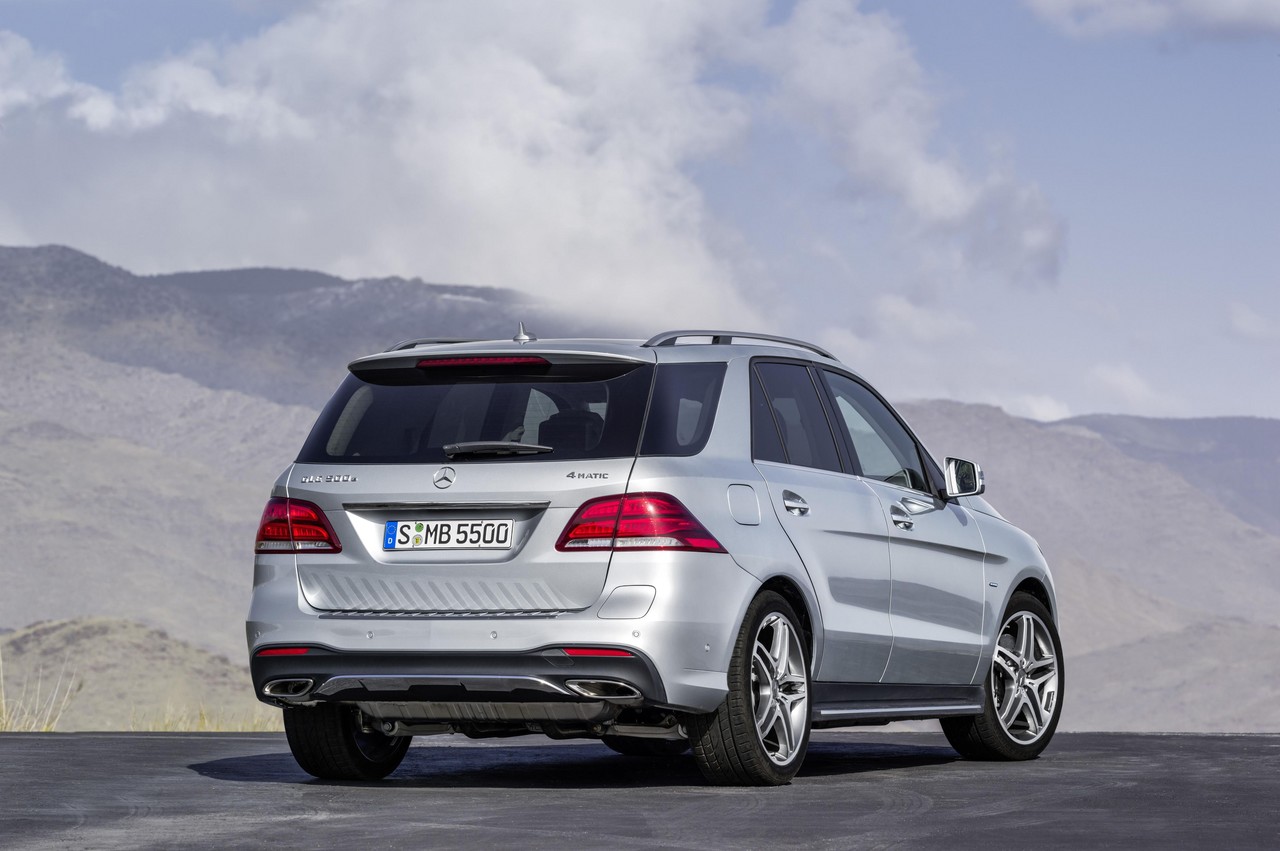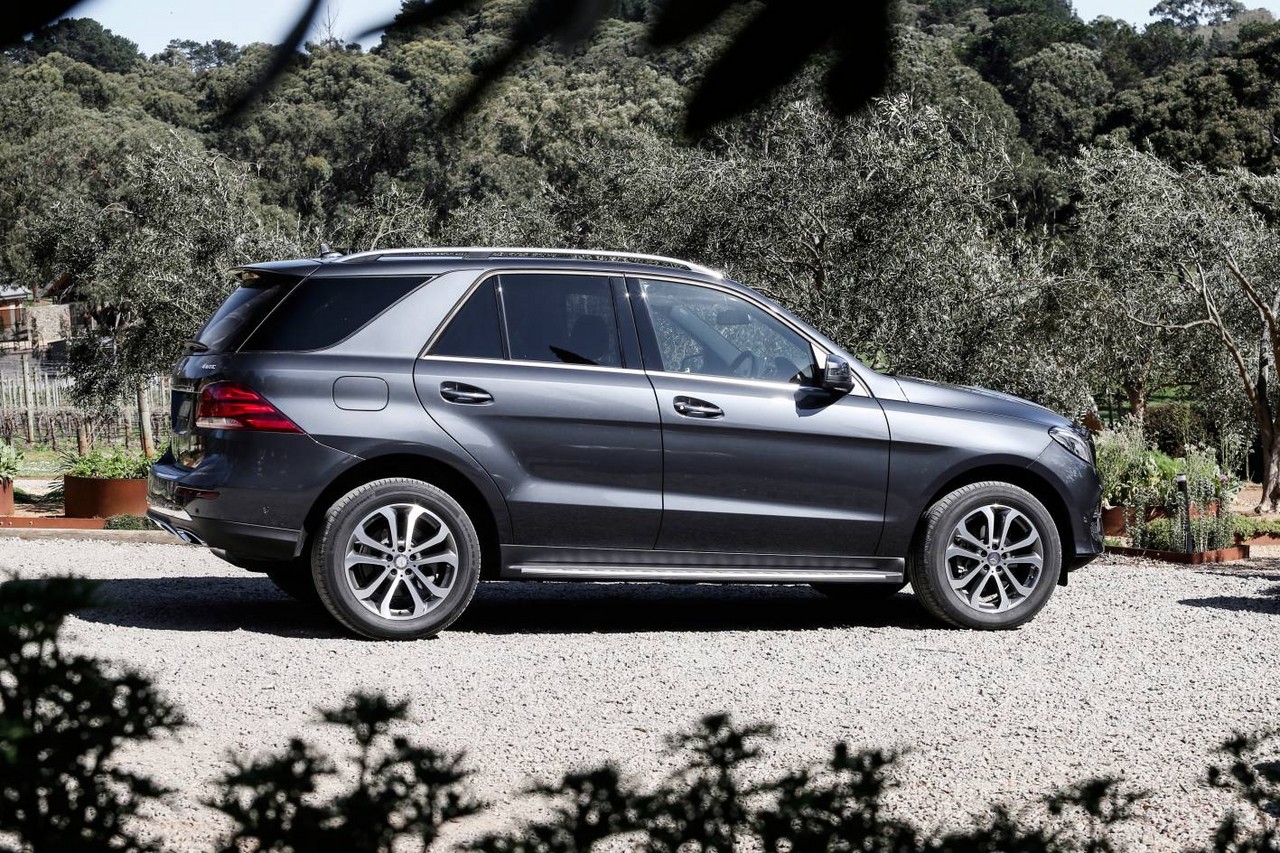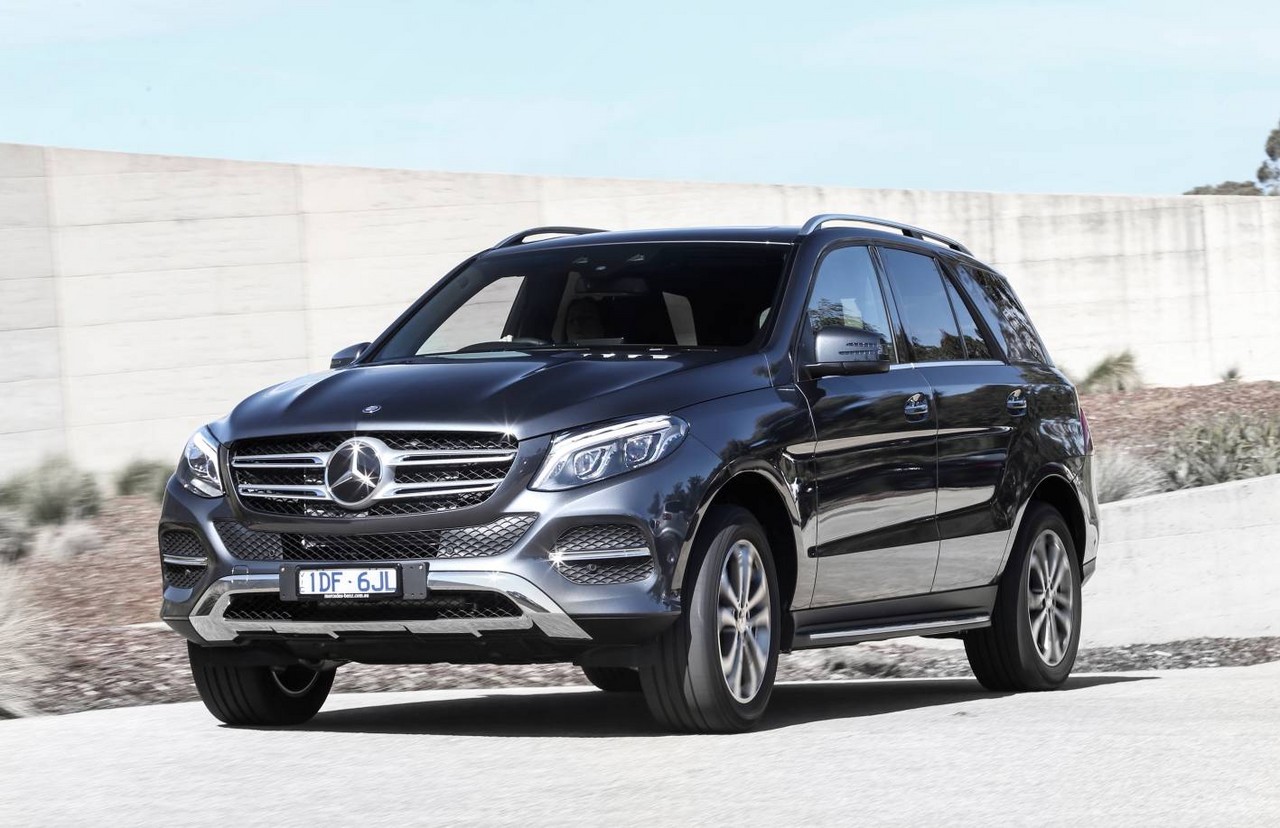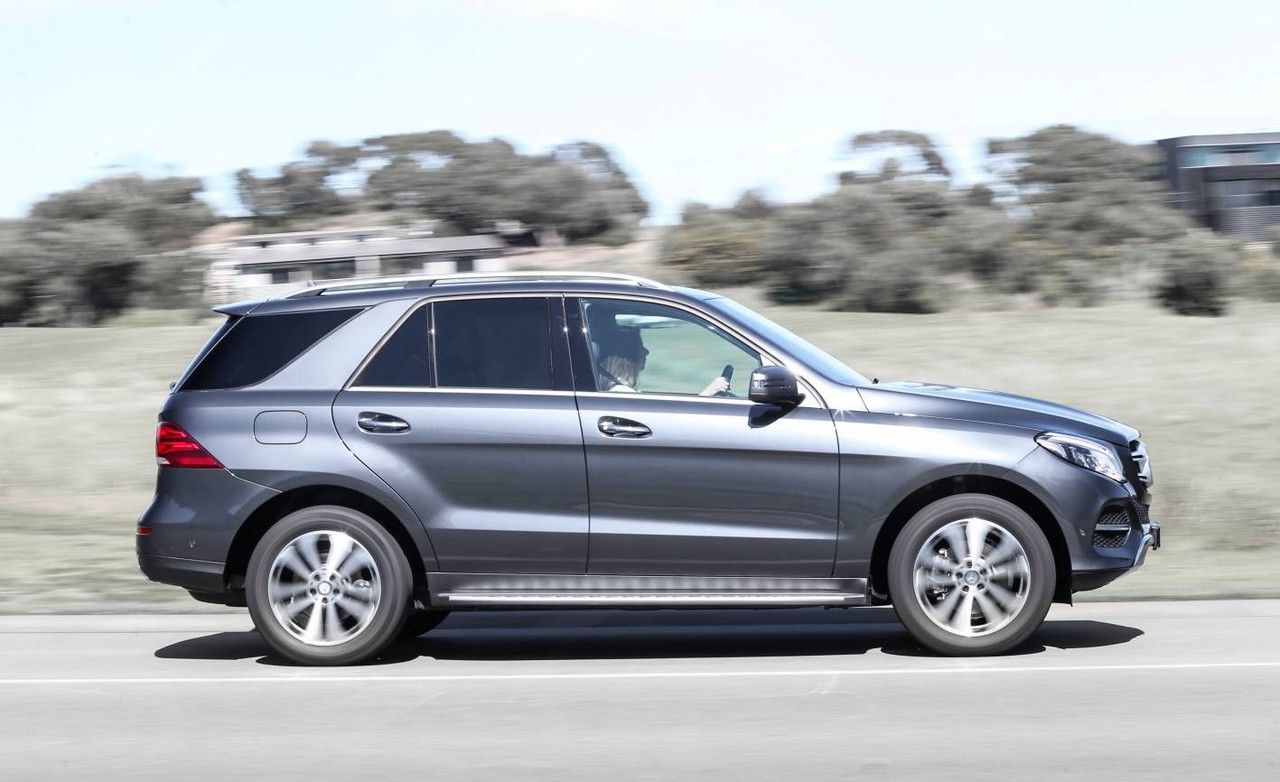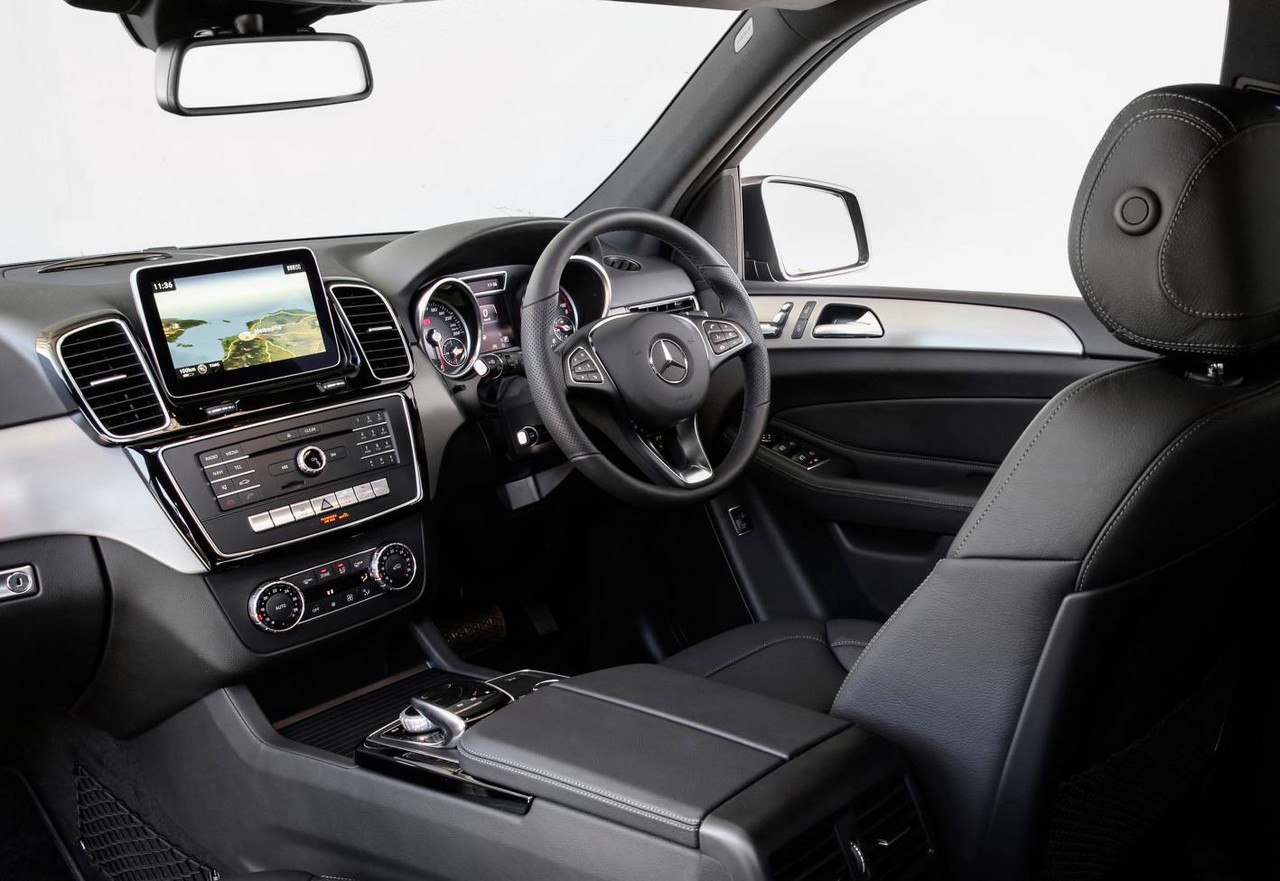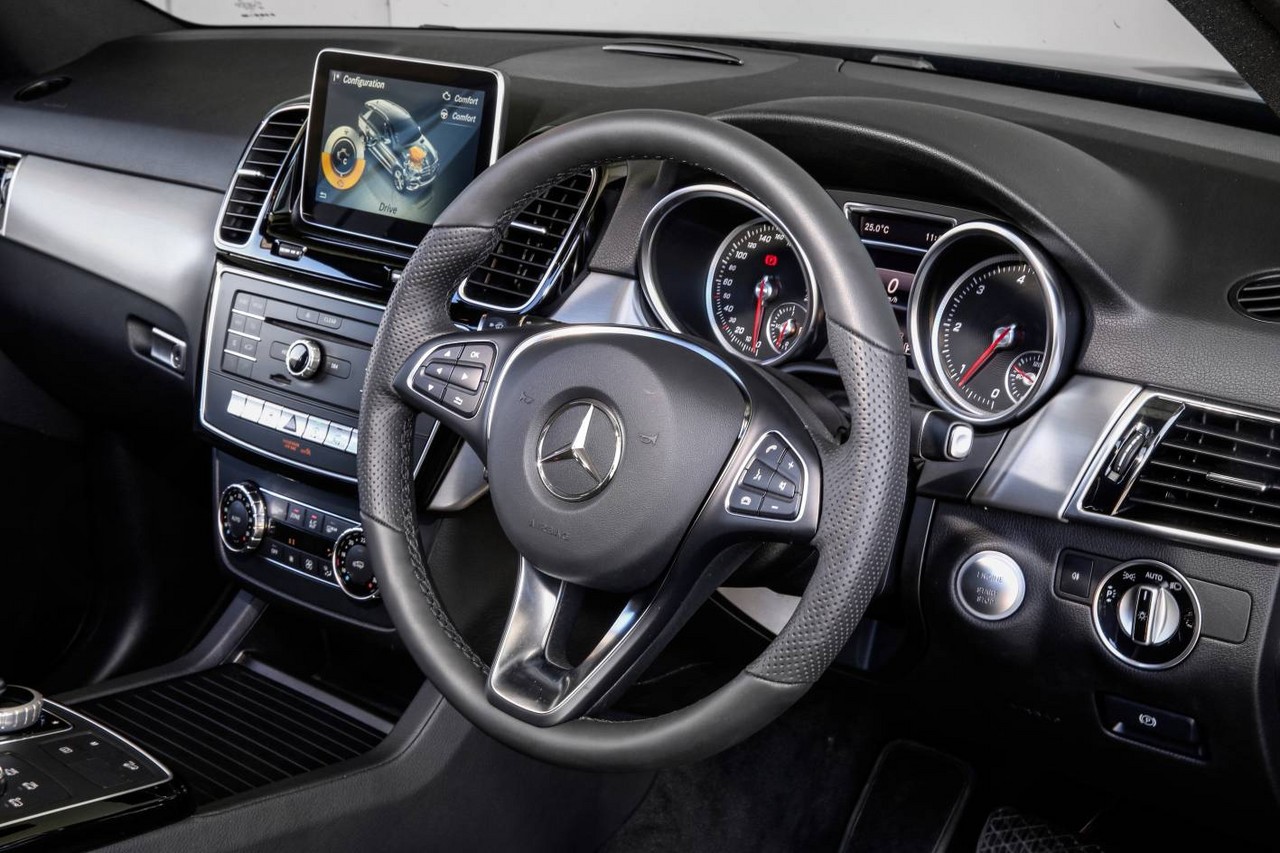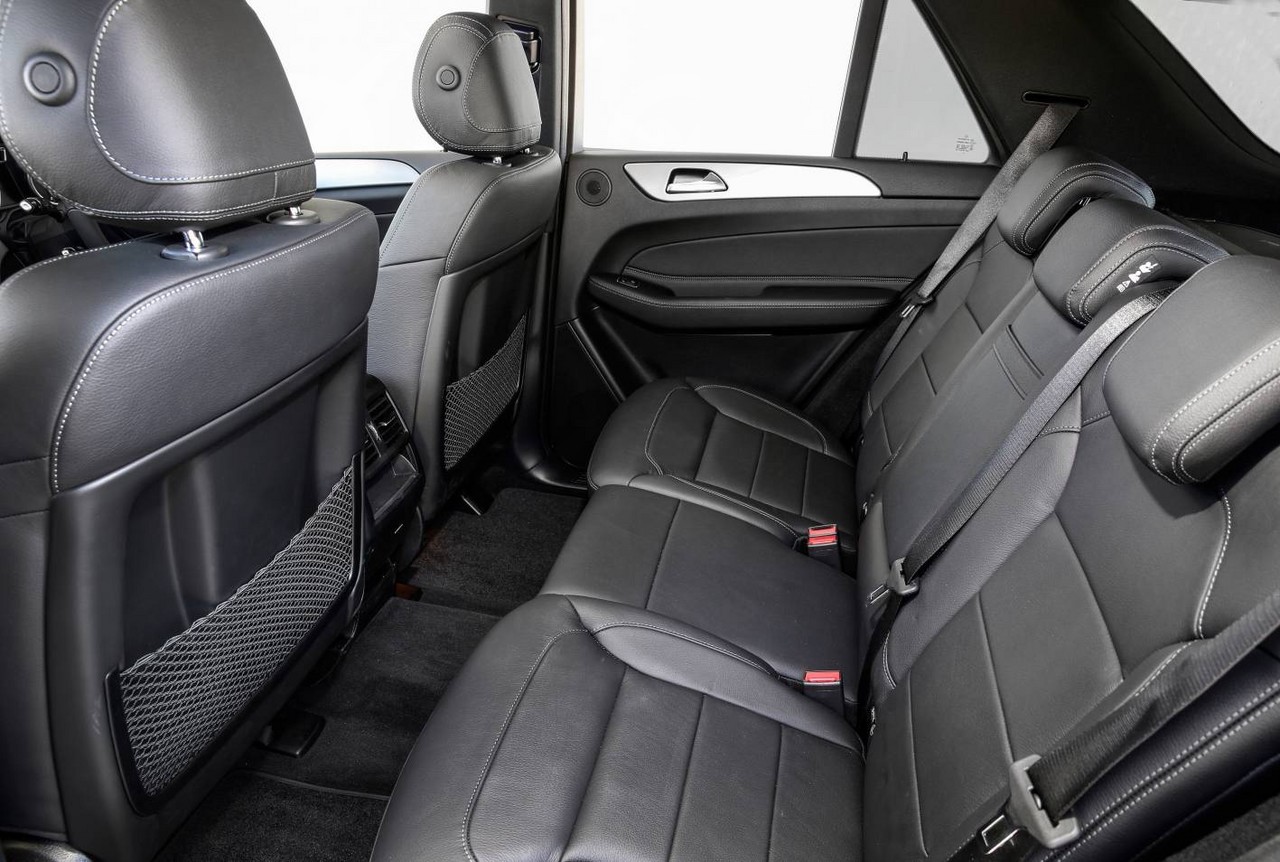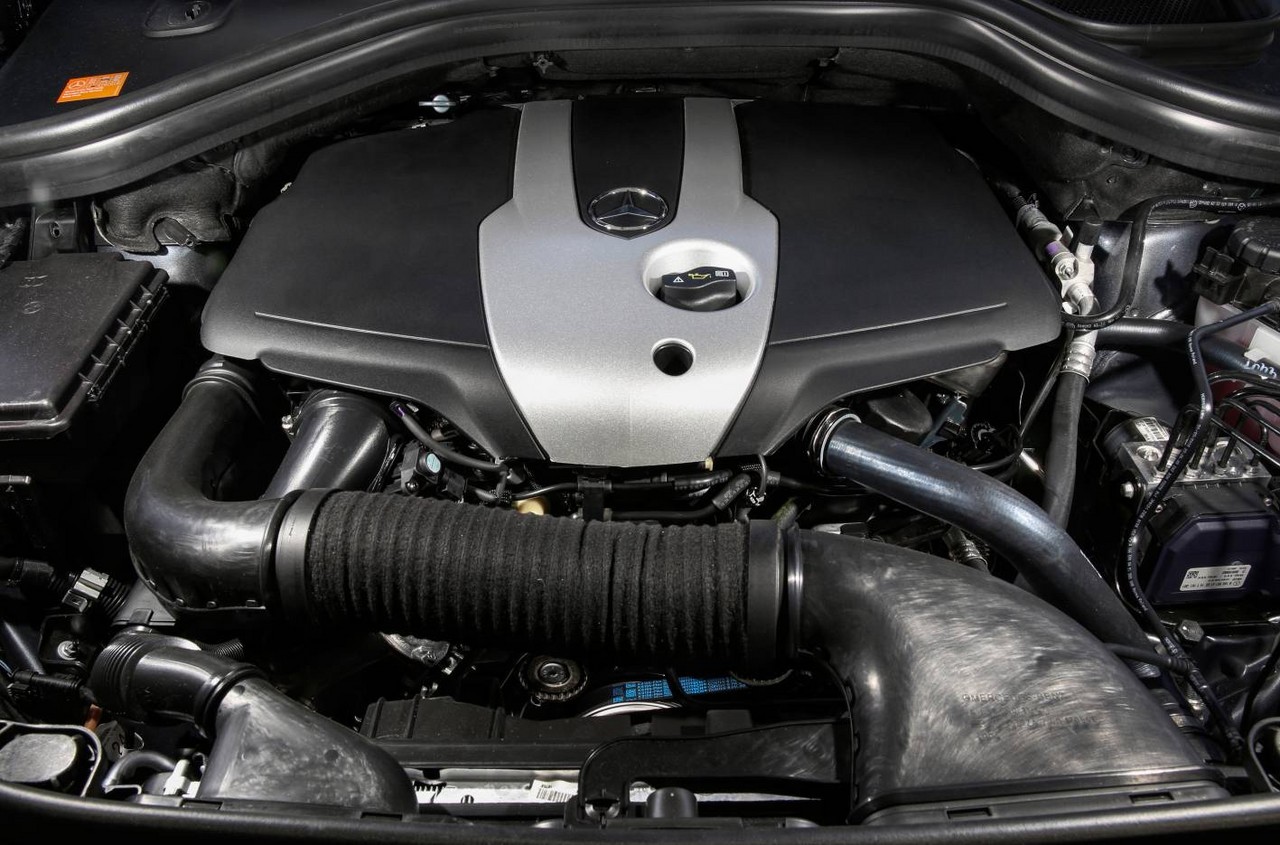
- Fuel-efficient turbo-diesel engines
- Comfortable ride
- Quiet, well-insulated cabin
- Light steering lacks feel
- For BlueTEC engines, automatic transmissions can be indecisive
Overview
Released in Australia in June 2015, the Mercedes-Benz W166 GLE-Class was a large, four-wheel drive SUV. Replacing the W166 M-Class as part of Mercedes-Benz’s new naming convention, the W166 GLE-Class was manufactured in Tuscaloosa, Alabama. Compared to the W166 M-Class, the W166 GLE-Class introduced updated styling and for models with diesel engines, nine-speed automatic transmissions.
Released in July 2016, the GLE 500 e was a plug-in hybrid that combined the 3.0-litre M276 bi-turbo V6 petrol engine with an 85 kW electric motor. Fuel consumption for the GLE 500 e 4MATIC over the combined ADR 81/02 test cycle was 3.3 litres per 100 kilometre while, according to Mercedes-Benz, the GLE 500 e had an electric-only range of 30 km.
Please note that the related Mercedes-AMG W166 GLE 63 has been reviewed separately.
| Engine | Trans. | Peak power | Peak torque | |
|---|---|---|---|---|
| GLE 250d | 2.1-litre twin-turbo diesel I4 (OM651) | 9sp auto | 150 kW at 4200 rpm | 500 Nm at 1600-1800 rpm |
| GLE 350d | 3.0-litre turbo-diesel V6 (OM642) | 9sp auto | 190 kW at 3400 rpm | 620 Nm at 1600 rpm |
| GLE 400 | 3.0-litre bi-turbo petrol V6 (M276) | 7sp auto | 245 kW at 5250-6000 rpm | 480 Nm at 1400-4000 rpm |
| GLE 500 | 4.7-litre bi-turbo petrol V8 (M278) | 7sp auto | 320 kW at 2550 rpm | 700 Nm at 1800-4000 rpm |
| GLE 500 e | 3.0-litre bi-turbo petrol V6 (M276) | 7sp auto | 245 kW at 5250-6000 rpm | 480 Nm at 1400-4000 rpm |
| Electric motor | 85 kW | N/A | ||
| Combined | 325 kW at 5250-5500 rpm | 650 Nm | ||
9G-Tronic transmission
Fitted as standard to the W166 GLE 250d and GLE 350d, the nine-speed automatic transmission was optionally available with an off-road reduction gear and inter-axle differential lock. According to Mercedes-Benz, the transmission featured a new type of torque converter which achieved 92 per cent efficiency; the transmission also had a gear ratio spread of 9.15, a double turbine torsional damper with centrifugal pendulum and a torque converter lock-up clutch with return spring for ‘refined operation’.
4WD system
The Mercedes-Benz W166 GLE-Class had a full-time four-wheel drive system (‘4MATIC’) with three open differentials. In normal conditions, the system provided and a 50:50 front:rear torque split. Furthermore, the adaptable traction control system (‘4ETS’) could brake any wheel that was about to lose traction to transfer torque to the wheels with grip.
Dimensions
Compared to the Mercedes-Benz W166 M-Class , the W166 GLE-Class was 15 mm longer (at 4819 mm) and 9 mm wider (1935 mm, excluding mirrors), though height (1796 mm) and wheelbase length (2915 mm) were unchanged.
Suspension
The Mercedes-Benz W166 GLE-Class had double wishbone front suspension and multi-link rear suspension. For models with the standard steel-sprung suspension, selective dampers were fitted which the shock absorbers to vary their damping characteristics according to road surface and vehicle speed (Mercedes-Benz’s ‘selective damping system’).
Airmatic, Adaptive Damping System and Active Curve System
The Mercedes-Benz GLE 500 was fitted with Mercedes-Benz’s ‘Airmatic’ air suspension with Adaptive Damping System (ADS) which consisted of:
- Air-filled spring struts on the front axle with integral ADS dampers;
- Air springs with separate ADS dampers on the rear axle;
- Electric compressor with central pressure reservoir and pressure sensor;
- Air spring valves;
- Sensors for level control and damping control; and,
- An electronic control unit.
Airmatic air suspension could compensate for variations in vehicle load and driving state, while also acting as a level control system. For off-road use, Airmatic enabled the suspension to be raised for greater ground clearance; at higher speeds, the suspension could be lowered for aerodynamic efficiency.
ADS was a fully automatic, electronically-controlled system which adapted the damping force at each wheel according to the road and driver behavior to reduce the forces exerted on the body by the movement of the wheels; the driver could also select from ‘Comfort’ and ‘Sport’ modes. ADS had four maps which it could use based on steering angle, turning angle sensors, vehicle speed and braking application:
- Level 1: soft rebound and soft compression for comfortable ride characteristics, suitable for little longitudinal and lateral acceleration;
- Level 2: soft rebound and firm compression (skyhook mode);
- Level 3: firm rebound and soft compression (skyhook mode);
- Level 4: firm rebound and firm compression, for minimising wheel load fluctuations when cornering and braking for more secure handling.
While Level 1 would be used for low levels of body movement, greater movement would result in the skyhook algorithm alternating between Levels 2 and 3 – by activating the fast-acting solenoid valves – to counter body roll and pitch. In more ‘dynamic’ handling conditions or when the ‘Sport’ suspension mode was engaged, Level 4 would be used.
The GLE 500 was also fitted with Mercedes-Benz’s ‘Active Curve System’ which used active anti-roll bars on the front and rear axles to control body roll according to lateral acceleration, road speed and the suspension mode selected. For more information on the Active Curve System, please see the Mercedes-AMG W166 GLE 63 review.
Safety equipment
Standard safety equipment for the Mercedes-Benz W166 GLE-Class included dual front airbags, a driver’s knee airbag, front and rear side airbags, full-length curtain airbags, ABS, electronic brake force distribution, brake assist, electronic stability control, traction control, active front seat head restraints, and front seatbelts with pre-tensioners and load limiters.
Standard active safety technologies for the Mercedes-Benz GLE-Class included:
- Mercedes-Benz’s ‘Pre-Safe’: if a collision was anticipated, Pre-Safe initiated automatic tensioning of the front occupants’ seatbelts, closure of the windows and sunroof and adjusted the position of the front passenger seat (if the memory package was fitted) to enhance occupant protection;
- Distronic Plus (adaptive cruise control with brake warning): an ‘adaptive’ cruise control system which used two short-range radar sensors positioned behind the front bumper to monitor the road up to 30 metres ahead, and a long-range radar located behind the radiator grille which had a range of 200 metres. Operating at speeds up to 200 km/h, Distronic Plus used an electronic control unit to analyse the information from both radar systems to calculate the engine, automatic transmission and braking parameters required for proximity control. As such, Distronic Plus could automatically apply the brakes to prevent the vehicle from becoming too close to traffic ahead (the time interval could be specified) and accelerate back to the set speed when traffic allowed. To accelerate from rest, the driver only needed to operate the Distronic stalk on the steering column or briefly depress the accelerator pedal. With Distronic Plus, automatic deceleration of up to four (4) m/s2was possible. If Distronic Plus detected that heavier braking was required, a warning light would illuminate in the instrument cluster and be accompanied by an audible warning. Furthermore, the electronic proximity control system could be activated independently of Distronic Plus at speeds over 30 km/h to alert the driver if they were approaching another vehicle too rapidly;
- Steering Assist with Stop&Go Pilot: operating in conjunction with Distronic Plus and at speeds up to 130 km/h, Steering Assist used a stereo camera located behind the windscreen to detect road markings, while the Stop&Go Pilot operated at speeds up to 60 km/h and enabled the system to use the vehicle in front or road markings as a means of orientation. If the vehicle was detected to be drifting out of its lane, Steering Assist would warn the driver and provide steering intervention to keep the vehicle in its lane;
- Pre-Safe Brake with pedestrian detection (autonomous emergency braking): using two 24 GHz sensors behind the front bumper which had a range of 30 metres and a 77 GHz radar which had a range of 200 metres, Pre-Safe Brake operated at speeds between 30 km/h and 200 km/h, and at speeds below 70 km/h if the vehicle was approaching a stationary queue of traffic. Around 2.6 seconds before the anticipated moment of impact, an audible warning would sound and a red warning would appear in the tachometer. Around 1.6 before the calculated impact, the first stage of Pre-Safe Brake would initiate partial braking autonomously with around 40 per cent of the maximum braking power (approximately four (4) m/s2); the Pre-Safe occupant protections system would also be activated. If the driver then applied the brakes, maximum braking force would be made available. If the driver failed to react, Pre-Safe Brake would – in its second stage – initiate autonomous emergency braking (i.e. maximum braking power) around 0.6 seconds before the unavoidable collision to reduce the severity of the impact. The pedestrian recognition function enabled Pre-Safe Brake to detect pedestrians when driving at speeds of up to 50 km/h;
- Collision Prevention Assist Plus (radar-based collision warning with autonomous braking and adaptive Brake Assist): operating at speeds up to 250 km/h to monitor the traffic ahead and at speeds up to 70 km/h for stationary objects, Collision Prevention Assist would issue a visual warning (when driving at speeds over 7 km/h) and an optical warning (when driving at speeds over 30 km/h if there was a collision risk. At speeds below 105 km/h (250 km/h in conjunction with Distronic Plus), Collision Prevention Assist Plus would initially provide partial autonomous braking to reduce vehicle speed and alert the driver. Furthermore, adaptive Brake Assist would calculate the braking force required and prime the braking system for optimum response when the driver depressed the brake pedal. If the driver did not respond and a collision was unavoidable, then maximum braking force would be applied to reduce vehicle speed. At initial vehicle speeds of up to 40 km/h, rear-end collisions could be prevented;
- BAS Plus with Cross-Traffic Assist: used a 24 GHz radar sensor with a range of 30 metres and a 77 GHz radar sensor with a range of 200 metres to monitor the distance to the vehicle ahead and would warn the driver if there was a risk of a collision. Brake Assist Plus could detect vehicles when travelling at speeds up to 200 km/h, and stationary objects when the driver was travelling at 7 km/h to 72 km/h. Significantly, Brake Assist Plus could calculate the necessary brake force assistance to prevent a rear-end collision, build up that pressure in the braking system and provide it as soon as the brake pedal was depressed for ‘the best possible deceleration’. The Cross-Traffic Assist function could operate at speeds up to 72 km/h and used the stereo camera and radar sensors to detect traffic that was crossing in front of or behind the vehicle. If detected, the driver would receive visual and audible alerts;
- Pre-Safe Plus: could anticipate rear-end collisions and warn following traffic by activating the rear hazard lights at high frequency. The Pre-Safe system would then deploy occupant protection measures and, post-collision, apply the vehicle’s brakes to prevent secondary accidents;
- Active Blind Spot Assist: active at speeds above 60 km/h, a corrective braking force would be applied to the wheels on one side of the vehicle if the driver attempted to change lanes when a vehicle was detected in the driver’s blind spot;
- Active Lane Keeping Assist: would vibrate the steering wheel as the vehicle approached a continuous lane marking line and, if crossed, automatically brake wheels on one side of the vehicle to return the vehicle within the lane;
- Crosswind Assist: could detect sudden, strong gusts of wind and prevent the vehicle from drifting out of its lane via corrective braking forces on one side of the vehicle; and,
- Attention Assist with drowsiness detection: operated at speeds in excess of 80 km/h and assessed driver behaviour (including steering movements) for signs of drowsiness; if detected, the driver would be provided with visual and audible warnings.
Euro NCAP testing
In Euro NCAP testing , an Mercedes-Benz W166 ML 350 BlueTec received a five star safety rating which included a 96 per cent adult occupant protection rating and a 75 per cent child occupant protection rating. In the offset crash test, there was a slight risk of serious chest injury for the front occupants and a slight risk of serious leg injury for the front passenger. Maximum points were awarded in the side impact test and, in the more severe pole test, protection of the chest was assessed as adequate and all other body areas as good. Under ANCAP’s methodology , this testing resulted in a five star adult occupant protection rating with a score of 36.34 out of 37.
Features: Mercedes-Benz W166 GLE 250d
Standard features for the Mercedes-Benz GLE W166 250d included 19-inch alloy wheels with 255/50 R19 tyres, Mercedes-Benz’s COMAND Online with a 20.3 cm TFT colour display, HDD navigation, a CD/DVD player, MP3/WMA/AAC compatibility, a digital radio tuner (DAB+), ‘Linguatronic’ voice control, Internet connectivity, Bluetooth mobile phone connectivity and audio streaming, an SD/USB interface, dual-zone climate control air conditioning, ‘Artico’ synthetic leather upholstery, power adjustable front seats, cruise control, LED daytime running lights, front and rear parking sensors, a rear view camera, a nappa leather steering wheel with gearshift paddles, 1/3 to 2/3 split and folding rear seats, rear seat through-loading facility, remote central locking with proximity key (i.e. keyless entry), power windows, power adjustable mirrors with power folding function, a height and reach adjustable steering wheel, auto-dimming mirrors (driver’s side and interior rear view), ambient lighting, electric parking brake, rear sunblinds, three 12 volt power sockets, an electric parking brake, velour floor mats, aluminium roof rails, tyre pressure loss warning system, instrument cluster with an 11.4 cm multifunction colour TFT display, a trip computer and an immobiliser.
As standard, the Mercedes-Benz GLE 250d also featured:
- Active Parking Assist: could identify parallel and right angle parking spaces – at speeds of up to 35 km/h – and provide automated steering to manoeuvre the vehicle into the space;
- LED Intelligent Light System: enabled the main LED beam to remain on since an area of that beam could be masked out to avoid dazzling traffic;
- Adaptive Highbeam Assist Plus: automatically dipped the high beam headlights to avoid dazzling other drivers; and,
- An ‘Easy-Pack Tailgate’: provided power-operated opening and closing of the tailgate.
Features: W166 GLE 350d, GLE 400 and GLE 500
Compared to the GLE 350d, the Mercedes-Benz GLE 350d was further equipped with 20-inch alloy wheels and 265/45 R20 tyres, leather upholstery, power adjustable and heated front seats, a 360 degree surround camera system, a power adjustable steering column, driver memory settings, ‘Crystal Grey’ fabric roof lining and ‘dark graphite’ poplar wood trim.
Beyond this, the Mercedes-Benz GLE 400 was further equipped with a Harman Kardon Logic 7 surround sound system and a power-operated glass sunroof.
The range-topping Mercedes-Benz GLE 500 was distinguished by its 21-inch alloy wheels with 265/40 R21 tyres, ventilated ‘luxury’ front seats, extended ‘Artico’ leather trim (for the dashboard, beltlines and door panels), tyre pressure monitoring and rear privacy glass.
Brochure
Specifications
Related links
- Mercedes-Benz Australia: Mercedes-Benz GLE
- Daimler Media: Mercedes-Benz GLE Premiere
- Wikipedia.org: Mercedes-Benz W166 M-Class


